In Wisconsin, the skies come alive with the vibrant presence of twelve distinct hawk species, each contributing to the ecological tapestry of the state.
From the iconic Bald Eagle to the elusive Ferruginous Hawk, these magnificent raptors showcase the diverse avian life thriving in Wisconsin’s varied landscapes.
From woodlands to marshes, these hawks embody adaptability and resilience, shaping the intricate balance of the region’s ecosystems.
Join us to explore these aerial predators as we delve into their unique characteristics, hunting strategies, and critical role in maintaining the Badger State’s ecological harmony.
Embark on a journey through Wisconsin’s skies to witness the captivating lives of these twelve remarkable hawk species. So, stay sharp.
12 Hawks in Wisconsin
Wisconsin’s diverse landscapes host a remarkable array of hawks, each with unique characteristics and roles in their ecosystems.
From the majestic Bald Eagle to the elusive Ferruginous Hawk, these raptors exhibit a captivating blend of power, agility, and adaptability.
Explore the lives of these fascinating birds, from their populations to hunting strategies, as we delve into the avian world of Wisconsin’s hawks.
1. Northern Goshawk
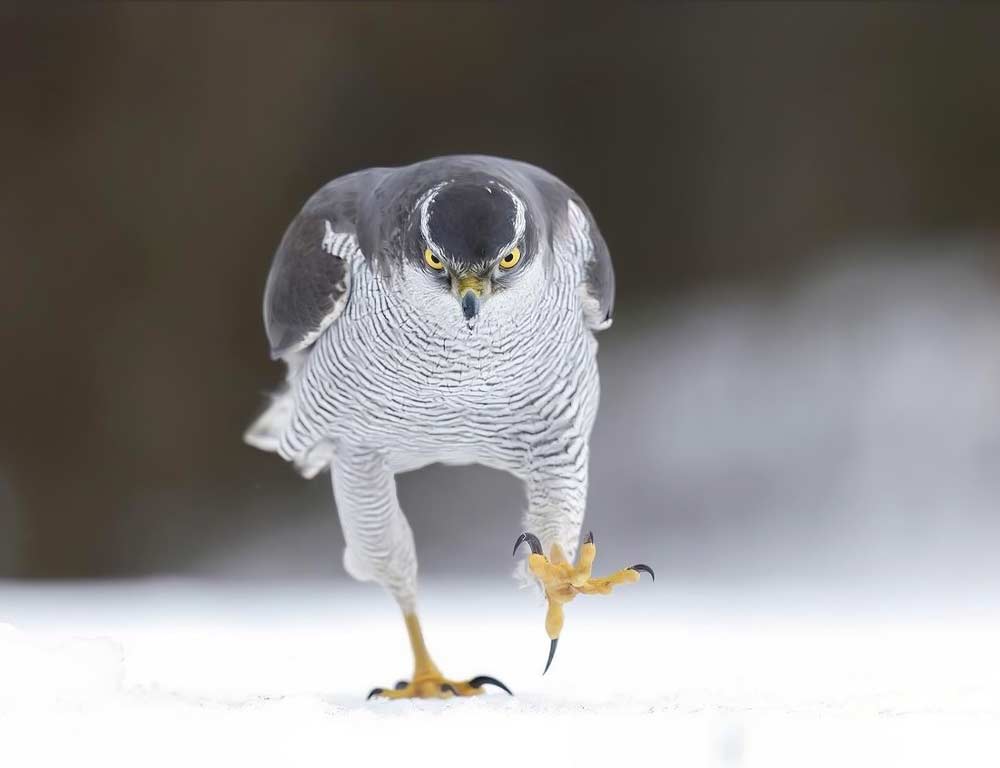
- Scientific name: Accipiter gentilis
- Population: Stable, breeding resident
- Life span: Up to 8-15 years
- Size: 20-27 inches
- Weight: 2-4 pounds
- Wingspan: 40-46 inches
- Status: Least Concern
The Northern Goshawk is an elusive and powerful raptor in Wisconsin’s forests. With a stable population, these hawks are skilled hunters, preying on medium-sized birds and mammals.
Their life span can reach up to 15 years, during which they establish territories for breeding. These hawks are characterized by their robust build, short wings, and long tails, making them agile in flight through dense woodlands.
They are known for their impressive hunting techniques, using surprise attacks on prey. Northern Goshawks have adapted to various habitats, from coniferous forests to mixed woodlands.
2. Red-tailed Hawk
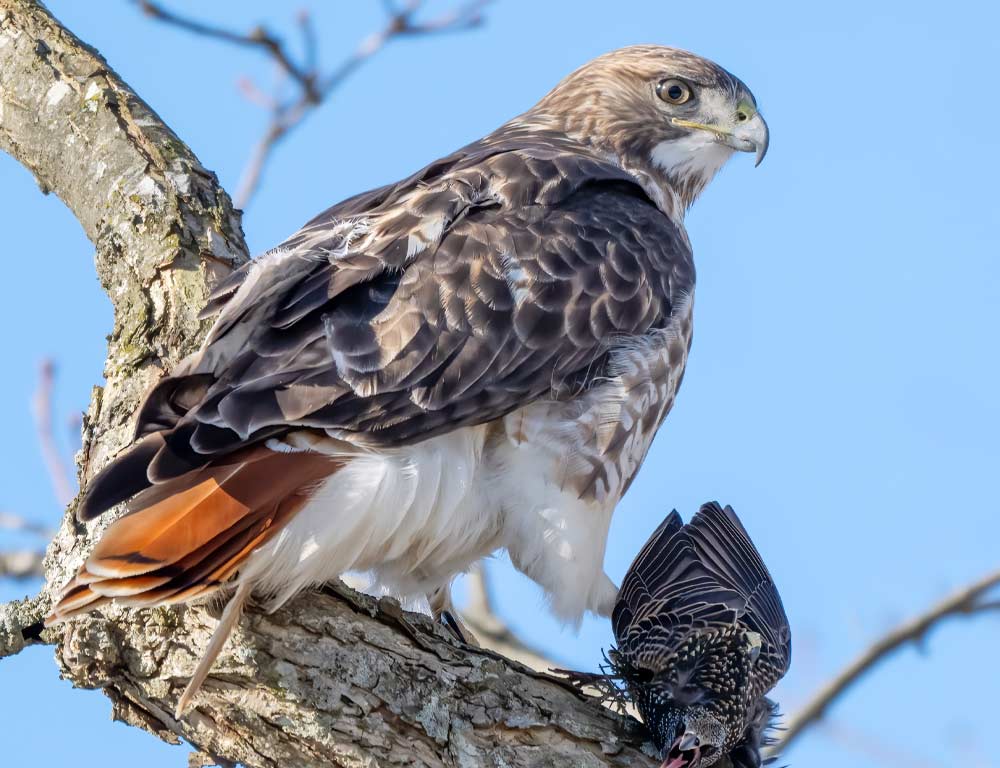
- Scientific name: Buteo jamaicensis
- Population: Abundant, widespread
- Life span: Up to 20 years
- Size: 18-26 inches
- Weight: 2-4 pounds
- Wingspan: 45-52 inches
- Status: Least Concern
The Red-tailed Hawk is common in Wisconsin, soaring high in open country and along highways.
With a lifespan of up to 20 years, these hawks have adapted well to diverse environments, from fields to urban areas.
Red-tailed Hawks are renowned for their distinctive brick-red tails, visible when they soar overhead.
They are skilled hunters, preying on small mammals and birds. Their adaptability and varied diet contribute to their widespread population.
3. Red-shouldered Hawk
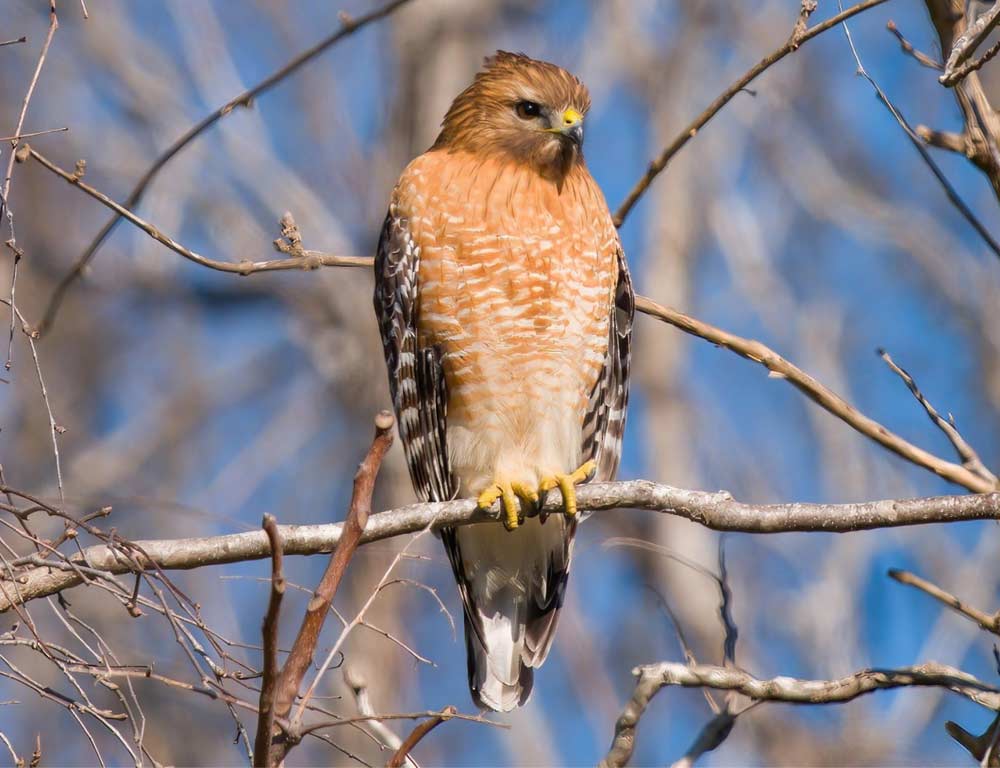
- Scientific name: Buteo lineatus
- Population: Stable, localized
- Life span: Up to 15 years
- Size: 16-24 inches
- Weight: 1-2 pounds
- Wingspan: 37-43 inches
- Status: Least Concern
The Red-shouldered Hawk is a woodland species often found near water sources in Wisconsin. With a stable population, these hawks have a lifespan of up to 15 years, establishing territories in dense forests.
Red-shouldered Hawks are known for their striking plumage, with distinctive reddish-brown shoulders. They primarily feed on small mammals and amphibians, showcasing their adaptability to diverse ecosystems.
4. Broad-winged Hawk
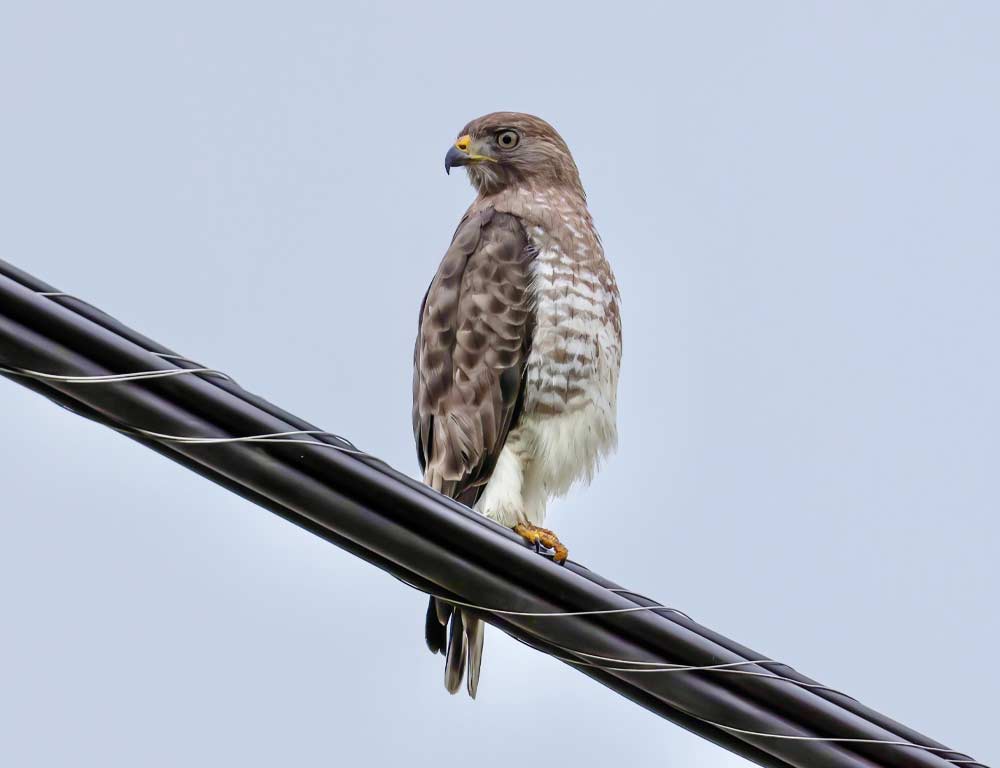
- Scientific name: Buteo platypterus
- Population: Abundant during migration
- Life span: 4-5 years
- Size: 13-17 inches
- Weight: 9-20 ounces
- Wingspan: 32-39 inches
- Status: Least Concern
Broad-winged Hawks are migratory raptors, making Wisconsin a crucial stop.
Although their life span is relatively short, they compensate with impressive migration patterns, flying in large groups called “kettles.”
These hawks are known for their distinctive plumage and are often seen in forested areas during migration. They primarily feed on small mammals and insects.
Broad-winged Hawks showcase the incredible phenomenon of avian migration, filling the skies with their soaring presence during the appropriate seasons.
5. Cooper’s Hawk
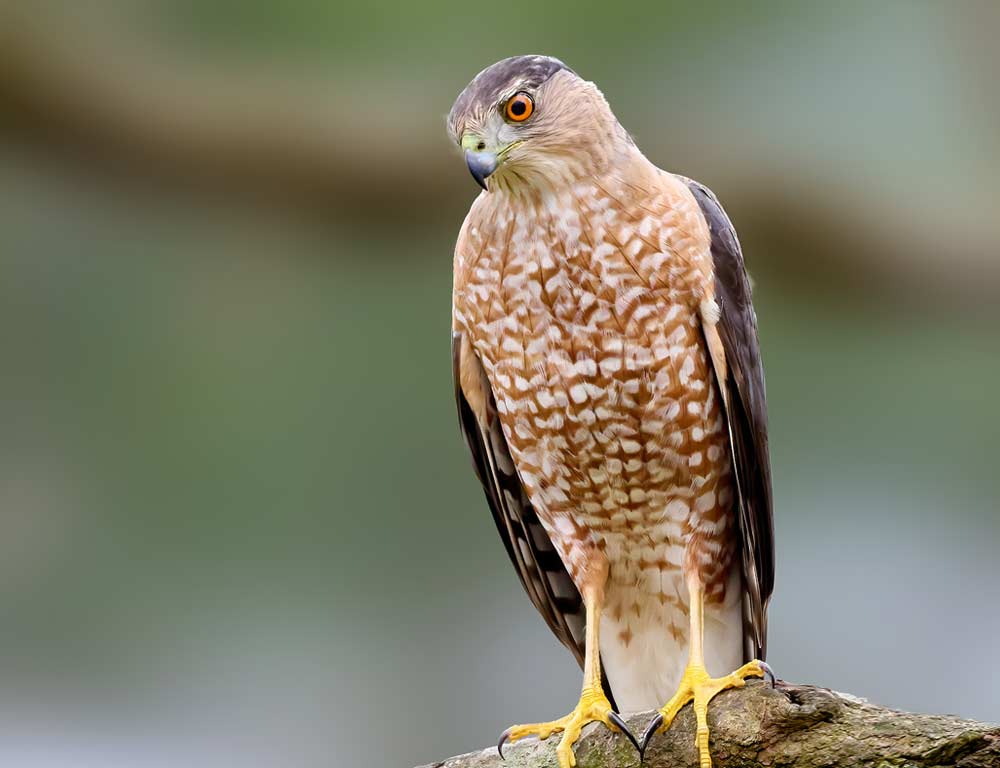
- Scientific name: Accipiter cooperii
- Population: Stable, widespread
- Life span: Up to 12 years
- Size: 14-20 inches
- Weight: 0.7-1.5 pounds
- Wingspan: 24-35 inches
- Status: Least Concern
Cooper’s Hawks are versatile hunters in various habitats, from woodlands to urban areas.
With a stable population, these hawks have a lifespan of up to 12 years. They are known for their agility and speed during pursuit flights.
These hawks have short, rounded wings and long tails adapted for maneuvering through dense vegetation. Cooper’s Hawks primarily prey on birds, using surprise attacks to capture their prey.
Their adaptability to natural and human-altered landscapes has contributed to their widespread distribution.
6. Sharp-shinned Hawk
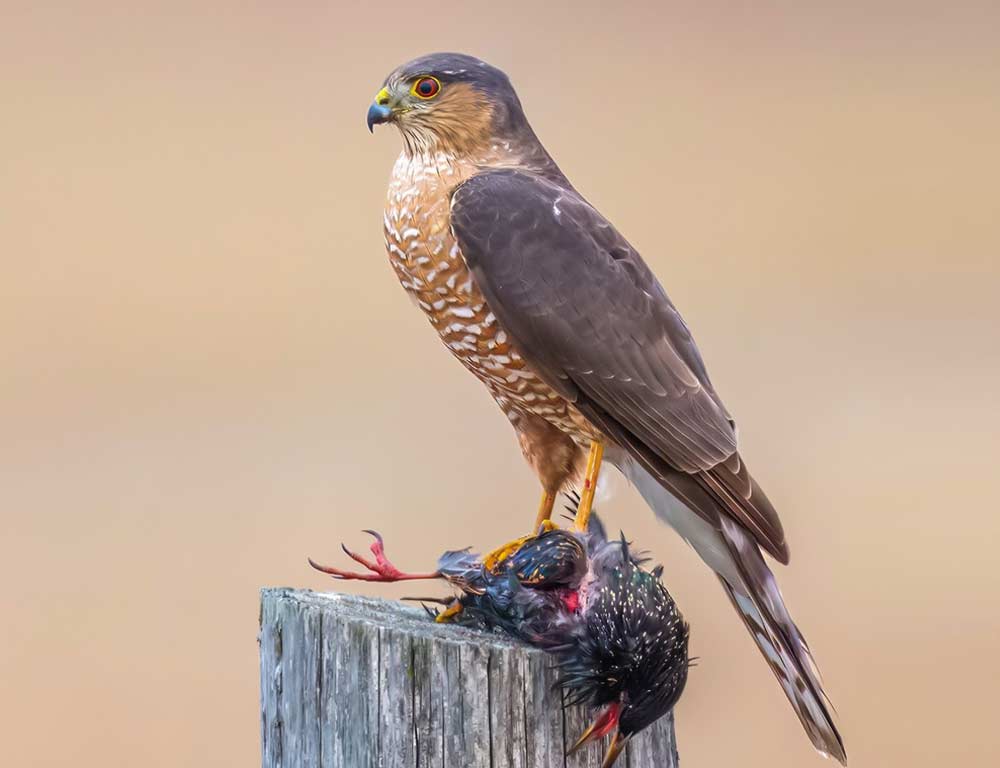
- Scientific name: Accipiter striatus
- Population: Stable, widespread
- Life span: Up to 7 years
- Size: 9-14 inches
- Weight: 3-7 ounces
- Wingspan: 16-22 inches
- Status: Least Concern
The Sharp-shinned Hawk is the smallest accipiter in North America and is found across Wisconsin.
With a stable population, these hawks have a relatively short lifespan of up to 7 years. They are known for their remarkable speed and agility, especially during pursuit flights.
Sharp-shinned Hawks have short wings and long tails, enabling them to navigate dense vegetation in pursuit of small birds.
Their primary diet consists of songbirds and small mammals. They are often observed near bird feeders, taking advantage of the abundant food supply.
7. Northern Harrier
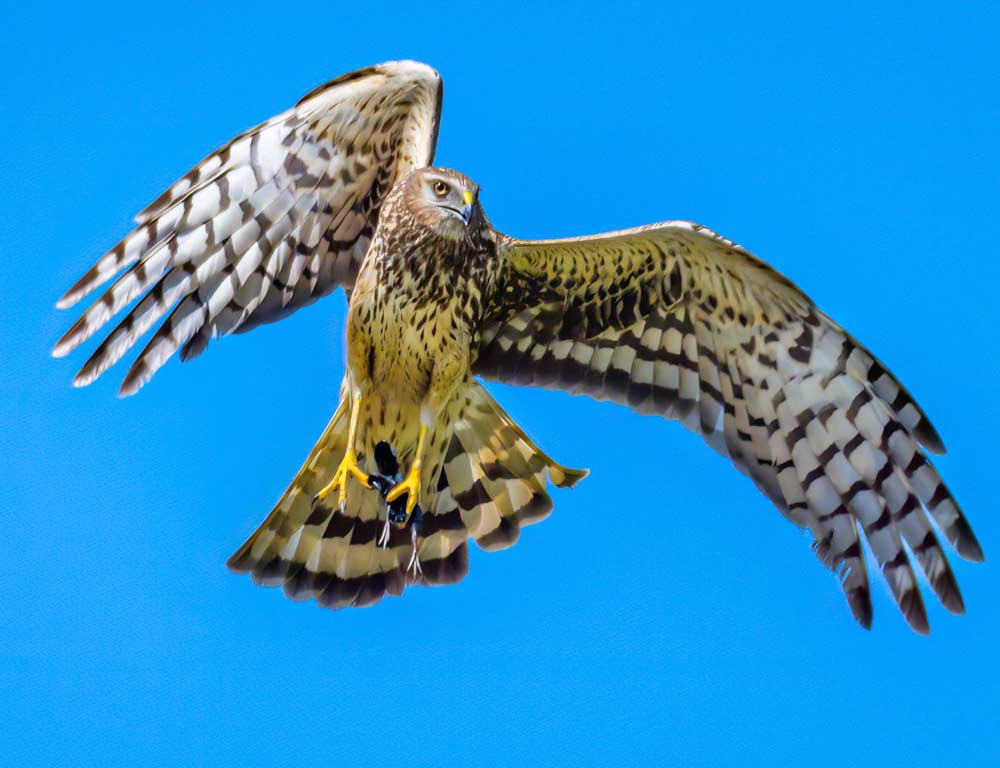
- Scientific name: Circus hudsonius
- Population: Stable, localized
- Life span: Up to 10 years
- Size: 18-24 inches
- Weight: 10-26 ounces
- Wingspan: 40-48 inches
- Status: Least Concern
The Northern Harrier is a distinctive hawk often found in marshy areas and grasslands. With a stable population, these hawks have a lifespan of up to 10 years.
They are known for their distinctive hunting behavior, flying low over open terrain and using their keen sense of hearing to locate prey.
Northern Harriers have a face resembling an owl, with a facial disk that aids sound detection.
They primarily feed on small mammals and birds, and their adaptability to different habitats, including agricultural fields, makes them a fascinating species to observe.
8. Swainson’s Hawk
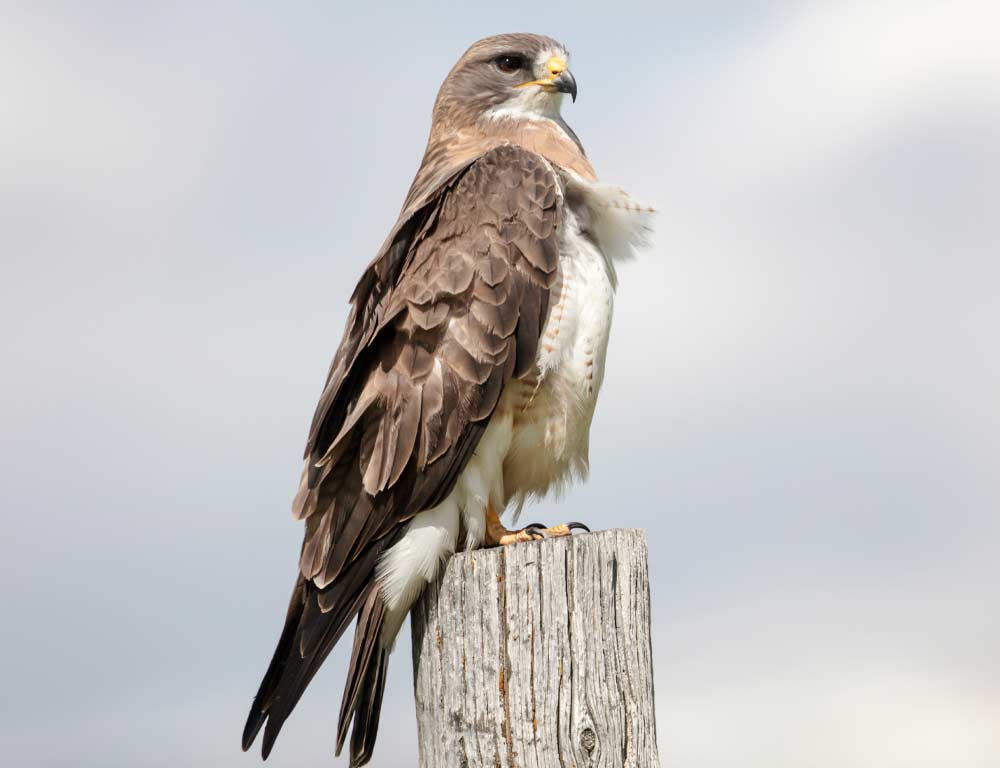
- Scientific name: Buteo swainsoni
- Population: Stable, migratory
- Life span: Up to 14 years
- Size: 18-22 inches
- Weight: 1.5-3.5 pounds
- Wingspan: 45-54 inches
- Status: Least Concern
Swainson’s Hawks are migratory raptors that breed in North America and winter in South America.
With a stable population, these hawks have a lifespan of up to 14 years. They are known for their distinctive plumage and soaring flight during migration.
These hawks primarily feed on small mammals and insects. Swainson’s Hawks showcase impressive long-distance migration, with thousands of individuals forming “kettles” as they navigate the continent.
Their migratory habits make them a unique and awe-inspiring species in the avian world.
9. Ferruginous Hawk
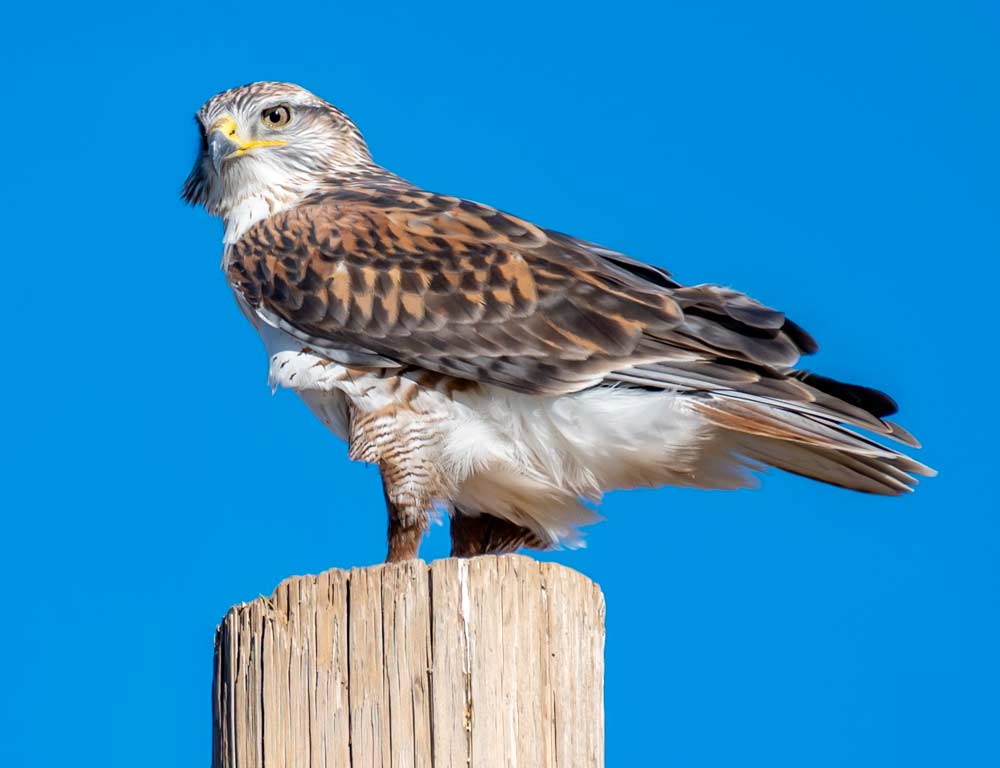
- Scientific name: Buteo regalis
- Population: Declining, localized
- Life span: Up to 20 years
- Size: 22-27 inches
- Weight: 2.5-5.5 pounds
- Wingspan: 50-56 inches
- Status: Near Threatened
The Ferruginous Hawk is a large buteo with a distinct light coloration, found in open habitats like grasslands and deserts.
Unfortunately, their population is declining and currently categorized as Near Threatened. These hawks have an impressive lifespan of up to 20 years.
Known for their robust build and pale plumage, Ferruginous Hawks primarily feed on ground-dwelling mammals. Their hunting strategy involves soaring at great heights and stooping down to catch prey.
Conservation efforts are crucial to ensuring the survival of this magnificent species, especially in the face of habitat loss and human disturbance.
10. Bald Eagle
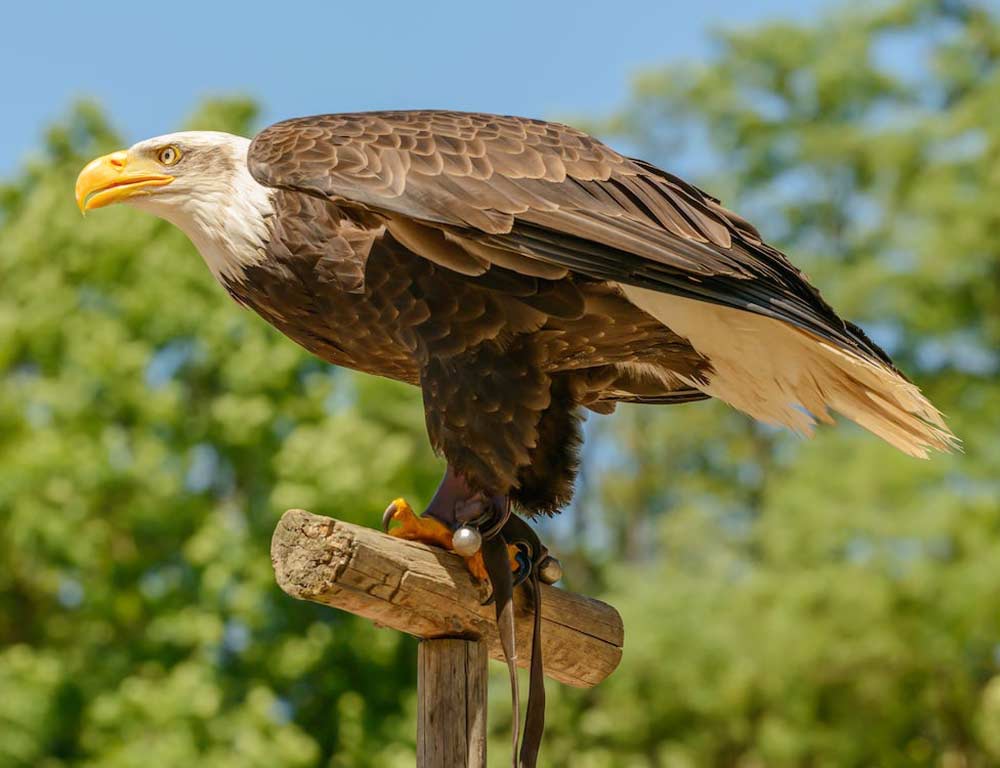
- Scientific name: Haliaeetus leucocephalus
- Population: Increasing, widespread
- Life span: Up to 20-30 years
- Size: 28-40 inches
- Weight: 6.5-14 pounds
- Wingspan: 6-7 feet
- Status: Least Concern
The Bald Eagle is an iconic raptor and the national symbol of the United States. With a rising population, these eagles are found near lakes, rivers, and coastal areas. They have an impressive lifespan of up to 30 years.
Bald Eagles are easily recognizable with their white heads and tails. They primarily feed on fish but are opportunistic hunters, taking advantage of various prey.
Their recovery from near-extinction is a testament to successful conservation efforts, including banning the pesticide DDT and habitat protection.
11. American Kestrel
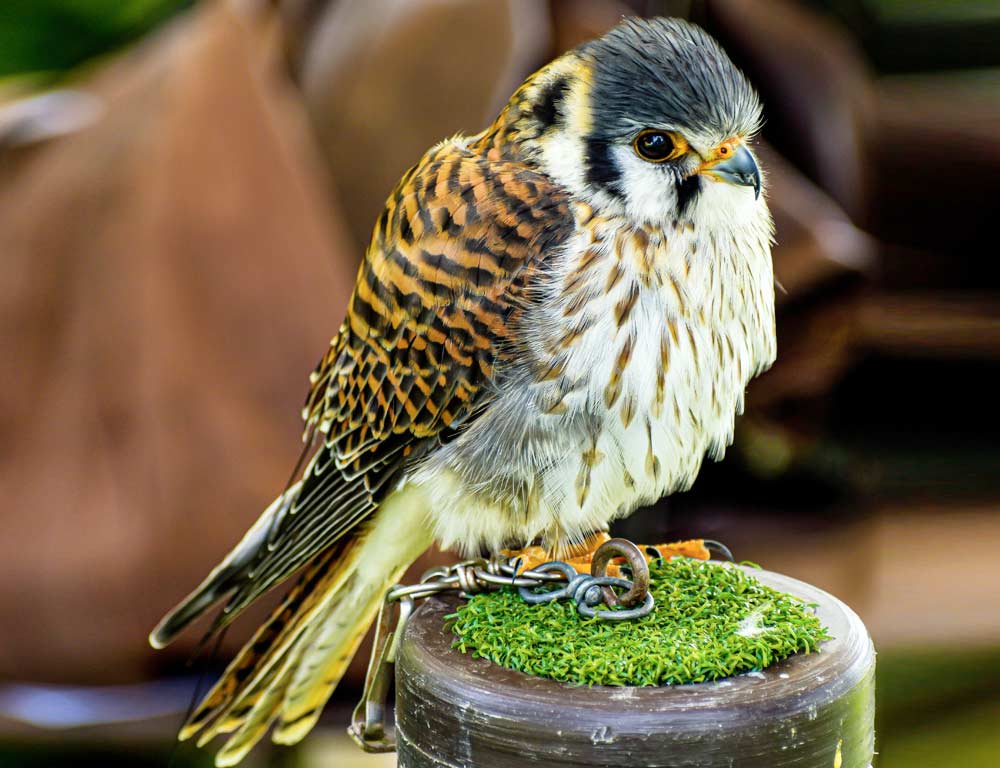
- Scientific name: Falco sparverius
- Population: Stable, widespread
- Life span: Up to 5-10 years
- Size: 8-12 inches
- Weight: 2-6 ounces
- Wingspan: 20-24 inches
- Status: Least Concern
The American Kestrel, also known as a sparrow hawk, is the smallest falcon in North America.
With a stable population, these kestrels have a lifespan of up to 10 years. They are found in various habitats, including urban areas, farmlands, and open fields.
American Kestrels are known for their vibrant plumage and remarkable hunting skills. They primarily feed on insects, small mammals, and birds.
Their ability to hover in the air while hunting makes them agile and efficient predators. Despite their small size, they are fierce hunters and play a vital role in controlling pest populations.
12. Osprey
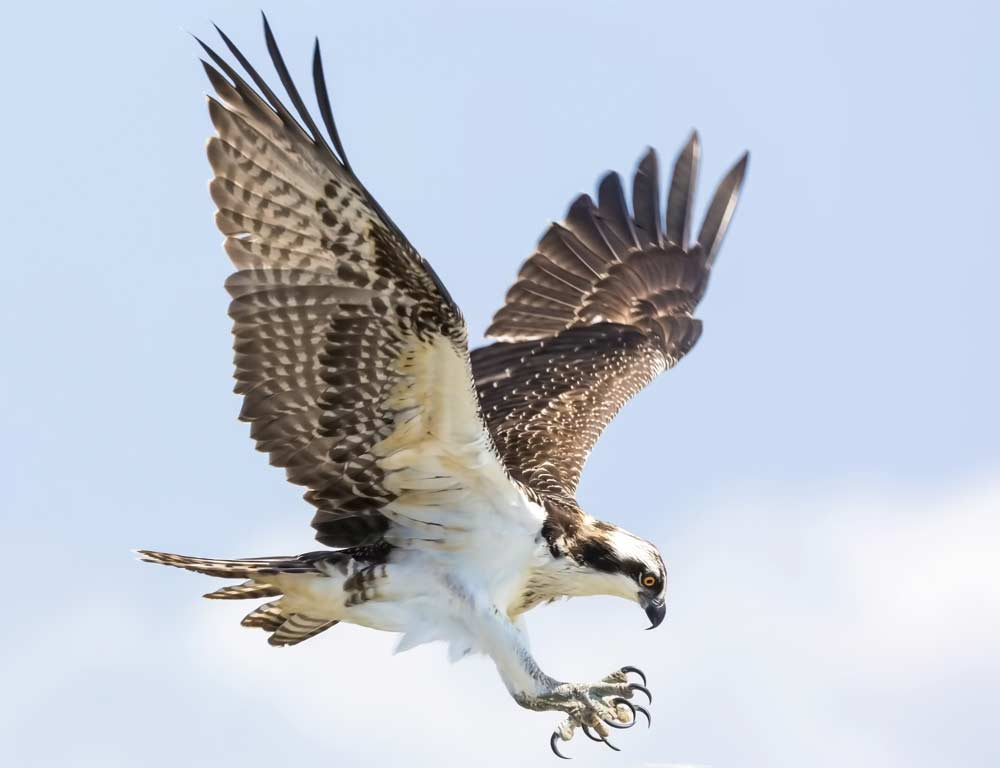
- Scientific name: Pandion haliaetus
- Population: Increasing, widespread
- Life span: Up to 20-25 years
- Size: 21-24 inches
- Weight: 2.5-4.5 pounds
- Wingspan: 5-6 feet
- Status: Least Concern
The Osprey, also known as the fish hawk, is a distinctive raptor near freshwater habitats. With an increasing population, these birds have a lifespan of up to 25 years.
They are recognized for their unique hunting behavior, which involves diving feet-first into the water to catch fish. Ospreys have specialized adaptations for catching fish, including reversible outer toes and spiky foot pads to secure their slippery prey.
They are widespread and are often seen nesting on artificial structures like utility poles and platforms. Conservation efforts have played a role in their recovery, especially concerning protecting nesting sites and reducing environmental contaminants.
Wrapping Up
The enchanting world of Wisconsin’s hawks unveils a tapestry of biodiversity, where each species plays a vital role in the ecosystem.
From the declining Ferruginous Hawk to the resurgent Bald Eagle, these raptors navigate diverse landscapes, showcasing nature’s resilience and the importance of conservation efforts.
As guardians of the skies, they inspire awe and appreciation for the delicate balance of wildlife in the Badger State. Thank you so much.
